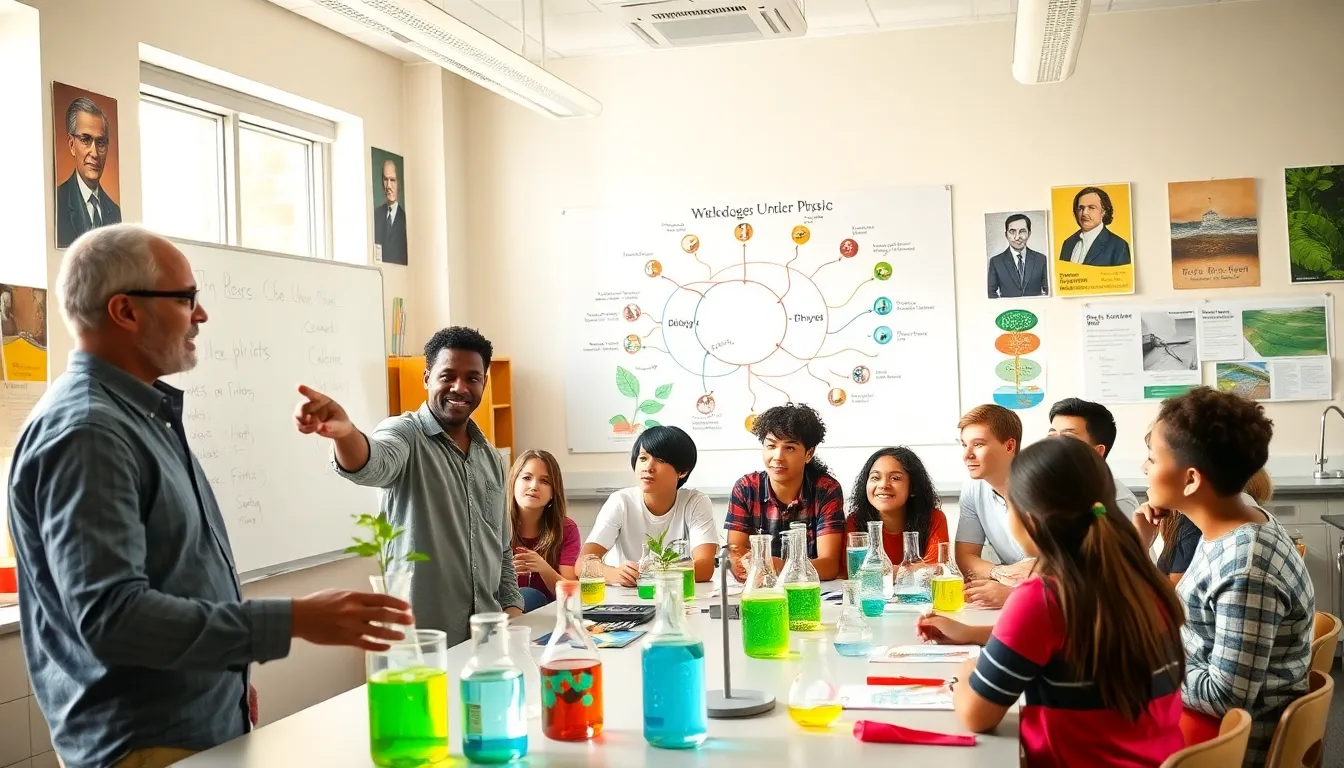Integrated Science Education represents a revolutionary approach to learning, seeking to break down the traditional boundaries between various scientific disciplines. In an age where knowledge is more interconnected than ever, this method fosters a comprehensive understanding of scientific principles and their applications. One emerging platform that promises to enhance this educational field is Redwebzine. This article will investigate into the essence of integrated science education, its key components, and Redwebzine’s potential roles and benefits while addressing the challenges of implementation and future directions in this educational paradigm.
Table of Contents
ToggleUnderstanding Integrated Science Education

Integrated Science Education is an instructional strategy that emphasizes the connections among various branches of science, such as biology, chemistry, physics, and environmental science. Instead of teaching these subjects in isolation, integrated science combines them into a cohesive learning experience. This approach allows students to see the relationships between different scientific concepts, encouraging a more holistic understanding of the material.
This educational method aligns with the natural interconnectedness of scientific phenomena observed in the real world. By integrating knowledge from multiple fields, students can better appreciate how scientific theories and applications are interdependent, so honing critical thinking and problem-solving skills.
Key Components of Integrated Science Education
There are several essential components that define Integrated Science Education:
- Transdisciplinary Learning: This involves teaching concepts that span across multiple scientific disciplines, allowing for a more comprehensive exploration of topics.
- Inquiry-Based Learning: Students are encouraged to ask questions, conduct investigations, and explore their interests, leading to deeper engagement.
- Real-World Applications: Integrated science often emphasizes how scientific knowledge applies to everyday problems and societal issues, making learning relevant and practical.
- Collaborative Learning: Group projects and teamwork are central to integrated science education, fostering communication skills and collaborative problem-solving.
- Technology Integration: The use of digital tools enhances learning experiences, from research to simulations, making complex scientific concepts more accessible.
Exploring the Role of Redwebzine in Education
Redwebzine emerges as a pioneering platform that could significantly enhance Integrated Science Education. As an interactive online magazine, it can serve several valuable purposes:
- Resource Hub: Offering articles, tutorials, and multimedia content that cover a wide range of scientific topics, Redwebzine can provide students and educators with easily accessible information.
- Interactive Learning: Integrating quizzes, discussions, and feedback mechanisms can create a stimulating and engaging learning environment where students can actively participate rather than passively consume information.
- Community Engagement: Redwebzine can help forums where students, educators, and scientists interact, fostering a collaborative educational space that emphasizes peer learning and mentorship.
Benefits of Integrated Science Education
The numerous benefits of Integrated Science Education offer substantial advantages for students, educators, and society:
- Enhanced Understanding: By bridging scientific disciplines, students develop a more profound and lasting understanding of complex concepts.
- Critical Thinking Skills: Integrated science encourages students to think critically and analytically by examining scientific problems from various perspectives.
- Preparation for Future Careers: Today’s job market increasingly requires interdisciplinary knowledge. Integrated science education prepares students for roles in emerging fields that demand a blend of skills and insights from different scientific areas.
- Greater Engagement: The engaging nature of integrated curricula can spark students’ interest in science, making them more motivated learners.
Challenges and Solutions in Implementation
Even though its advantages, several challenges exist in implementing Integrated Science Education effectively:
- Curriculum Constraints: Many schools have rigid curricula that resist the flexibility needed for integrated learning. To address this, educational policymakers must advocate for reform that promotes interdisciplinary approaches.
- Teacher Training: Educators may lack the necessary training to teach integrated science concepts effectively. Professional development programs can equip teachers with the skills to carry out integrated curricula successfully.
- Resource Limitations: Access to necessary tools and resources can be a barrier. Schools can collaborate with local science organizations and institutions to obtain funding and resources to support integrated science initiatives.
Future Directions for Integrated Science Education
Looking ahead, the future of Integrated Science Education is bright but requires strategic steps:
- Increased Collaboration: Encouraging partnerships between schools, universities, and industries can lead to more robust integrated science programs that prepare students for real-world challenges.
- Focus on Technology: Leveraging advancements in technology will enhance the learning experience, allowing students to explore scientific concepts in innovative ways.
- Personalized Learning: As educational technology evolves, integrating adaptive learning systems can provide personalized educational experiences that cater to individual learning styles and paces.
Conclusion
Summarizing, Integrated Science Education offers a promising framework for nurturing a deeper understanding of scientific principles by connecting various disciplines. Platforms like Redwebzine can play a pivotal role in this educational transformation, providing resources and fostering engagement. While challenges in implementation exist, a collective effort among educators, policymakers, and the community can pave the way for a dynamic and integrated approach to science education. As society continues to face complex challenges, the need for scientifically literate individuals is more crucial than ever.


